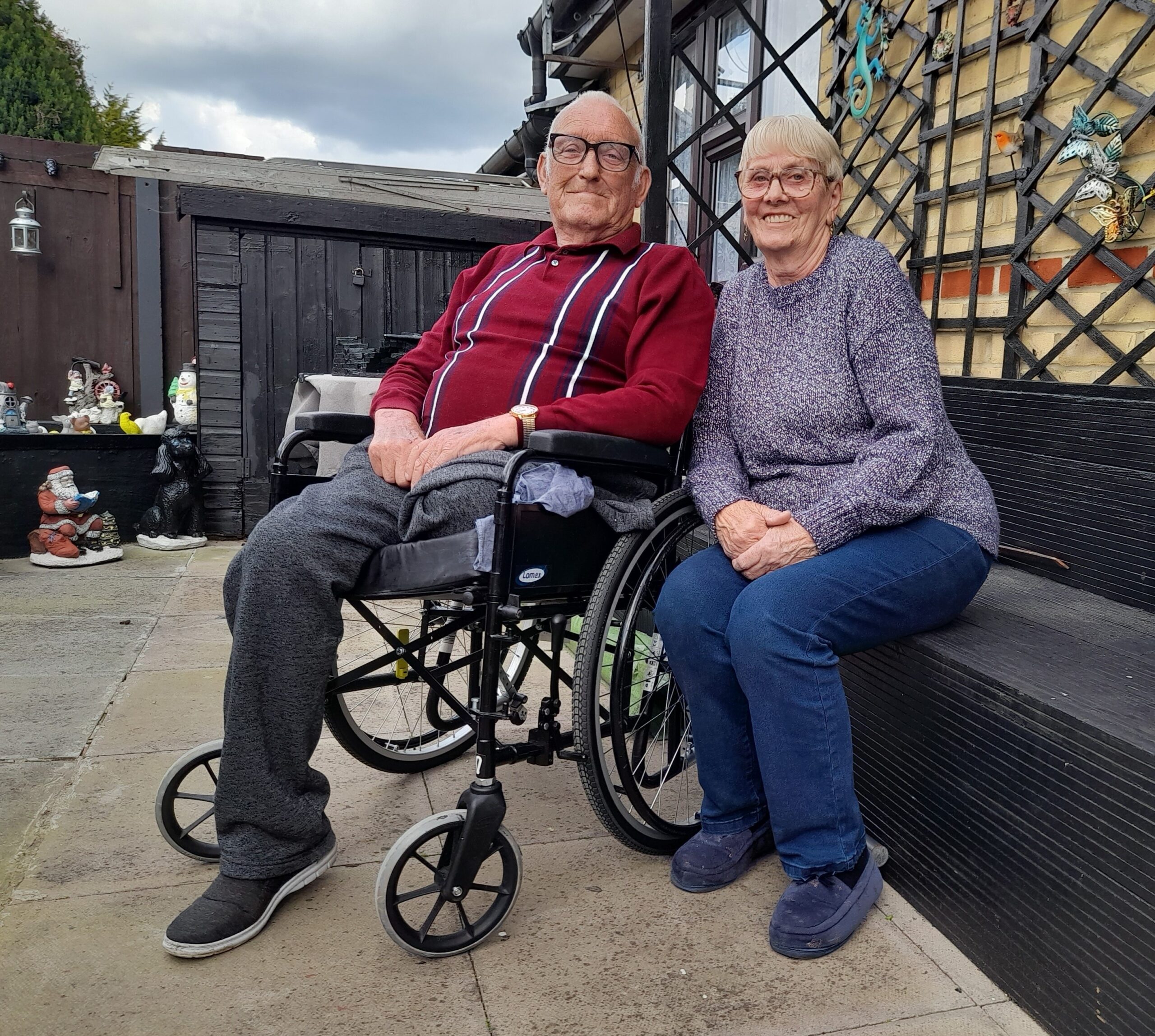Fred Beal may have lost a leg, but he hasn’t lost his sense of humour.
“I look like Long John Silver. All I need now is a patch and a parrot,” he jokes.
Fred’s left leg was amputated from the knee down, following complications from diabetes. His humour helped him to come to terms with the amputation quickly, but it does mean he is less mobile and can no longer drive.
His aim now is to become more confident using his prosthetic leg, a walking frame and a wheelchair, so that he can get to his garden shed unaided and spend more time sitting outside in the sunshine, tending his plants and making hanging baskets.
Helping him to achieve this is a team of experts from the Kent Community Health NHS Foundation Trust (KCHFT) amputee clinic, at Coxheath, near Maidstone, as well as his family which includes his wife Sandra and their four children. The couple’s nine grandchildren and two great grandchildren are also helping to keep him motivated.
Fred, 80, a retired lorry driver and semi-qualified electrician, said: “I went to the amputee rehabilitation clinic at Coxheath and everyone there was very nice. They showed me exercises and things to do to get me moving and walking again. I used their gym and with someone watching, I walked along holding onto bars and then with a frame. Once I got my prosthetic leg, they helped me with that.
“One of the physiotherapists, Simmone, visited me at home to see how I am getting on. She’s strict, but kind and tells me if I could do something in a better way.
“I’ve got follow up appointments at the clinic, but now it’s down to me. I’m doing alright. But I would like to do more. So I just keep pushing myself. I’m using the prosthetic leg some of the time and the other day I walked from the chair to the kitchen and back, 12 times.”
Fred, was diagnosed with diabetes in his early forties. His leg was amputated from the knee down in August 2023. Initially he had a blister on a toe, which a nurse at his GP surgery was dressing, but this worsened while on a UK seaside holiday in April 2023. Wife Sandra, 73, a retired carer, noticed the toe had an odour and that the dressings needed to be changed frequently. The toe had become infected and Fred was admitted to the Kent and Canterbury Hospital where it was amputated. Soon after, another two toes started to go black and the infection spread further, resulting in the need for the leg amputation.
Simmone Bristow, a senior physiotherapist with KCHFT’s Community Rehab Team, said: “We worked with Fred before he received his prosthetic limb, to help improve his strength and to use a pneumatic post-amputation mobility aid, known as a PPAM, while Fred’s prosthetic was being made at the limb centre. We then worked alongside the prosthetists and physios there to rehabilitate him on to his prosthetic. He has now transitioned from being a full-time wheelchair user and can choose to spend more time on his limb than in his wheelchair if he wants to.
“Our amputee clinic works to empower patients to take ownership of their own limb care and rehabilitation, with weekly face-to-face sessions on-site to progress them to the next level, but there is a high expectation on patients doing their exercises independently to be able to progress onto a limb. Fred is a wonderful example of someone who worked hard at this to achieve his goals.”
Recently, improvements have been made at our Coxheath amputee clinic thanks to Simmone and rehabilitation physiotherapist Emily Cole. They worked on a quality improvement (QI) project together, to reduce the maximum length of time patients were spending on the adult community rehabilitation team caseload.
Their aim was to reduce this from 716 days to 120 days. They actually reduced it to 99 days, while at the same time patients were still achieving their goals. There was no negative feedback and no-one was re-referred to the service due to the shorter length of time.
Simmone and Emily carried out a full review of the caseload and care plans. They put together a clinic welcome pack, letting those using the service know what to expect and what was expected of them. They also created a leaflet which was given out at a patient’s first appointment, which directs people to support from other services, groups and charities.
The pair set a SMART aim and used a driver diagram to map out how they would achieve this.
Find out more on the A3 project on a page below.



